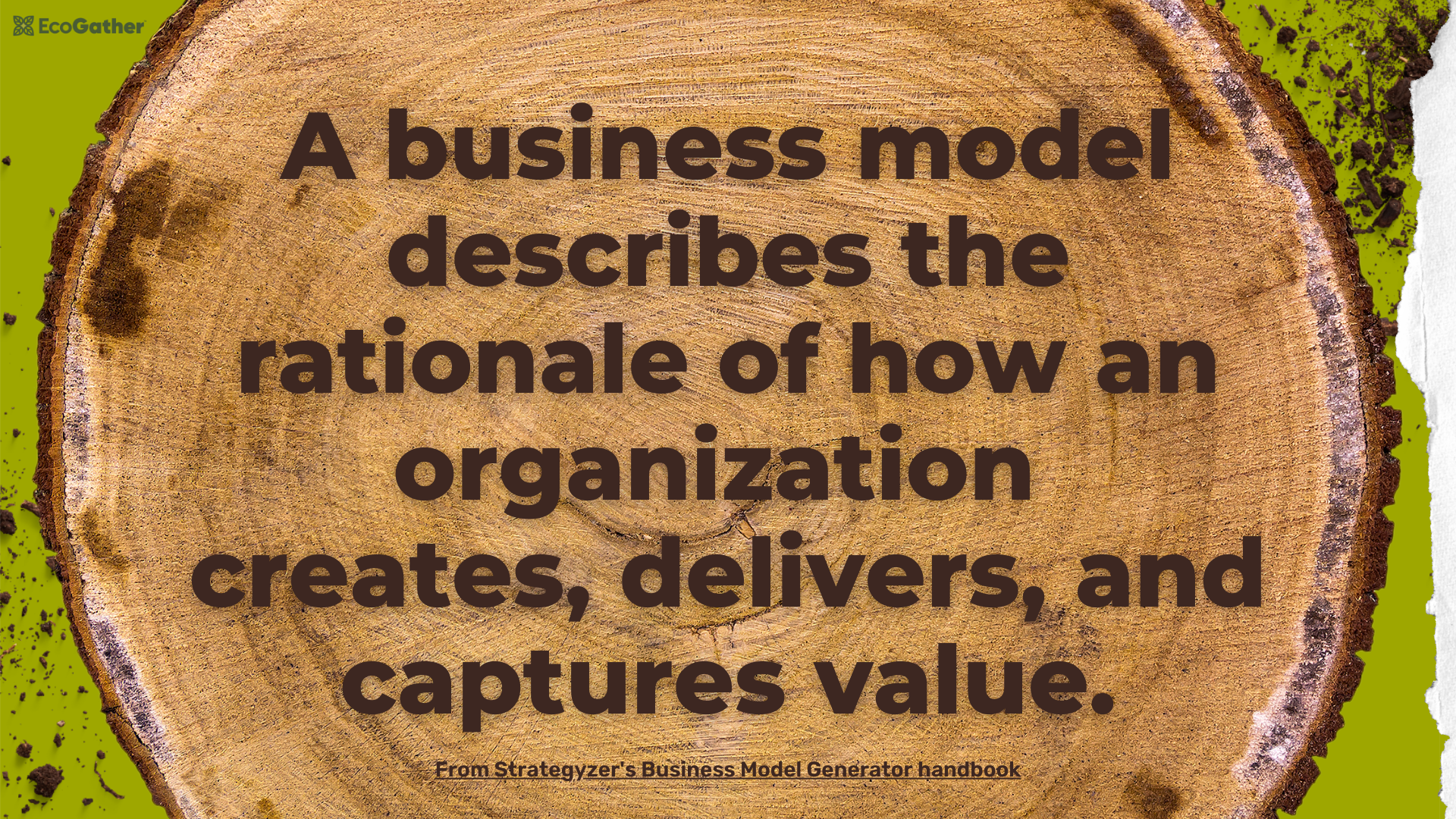Exploration

What is a business model?
Choosing to develop an idea into a business can be a tedious process, which can deter us from doing so in the first place. However, many entrepreneurs will soon realize the usefulness of a business plan — it may not only help refine a business idea, but also determine the financial needs of the business, help us navigate the changing needs of that business during its growth stages, develop a budget guide against which expenses and gains will be evaluated, and even offer projections about the long-term evolution of your agricultural business. As you can see, a business plan becomes relevant from the very moment of conceptualizing an agricultural project. Business models are designed to evolve along each step of the way. A business plan can do a lot – but what exactly does it entail?

Simply put, a business plan is a guide that outlines goals for your business and how you plan to reach them. Let’s first take a look at why a business plan should be part of your farm business. Watch the following video, and note that while they encourage farmers to reach out to the University of Maine Extension, most states in the U.S. have similar extension agencies that can help you put together a business plan if you’re looking for that type of support.
University of Maine: “How to create a farm business plan”
Writing out a complete business plan is a time-consuming process. Before you spend your time and energy writing a multi-page narrative, explore your ideas with a simple tool—the Business Model Canvas. Adapted for use by startups, this simple one-page matrix can be a valuable tool to help farm entrepreneurs test a business idea in the context of nine key areas. We share the following resource where the Business Model Canvas is explained in the context of new farm start-ups. Using this tool will give you the opportunity to summarize the key business concepts of your enterprise in an accessible format that you can revise and update over time. Watch the next video to learn about the Business Model Canvas, then read the article that follows for more detail about how to move through each section and is focused on farm businesses.
Watch: Strategyzer: “Business Model Canvas Explained“
Read: Stephanie Plaster (2022): “Using the Business Model Canvas to Refine Your Farm Business Idea” from the University of Wisconsin-Madison Farm Management Division of Extension
Getting ready to write your own business plan
To support you in the business plan development process, we share a short list of curated tools that will help make the process more approachable. It is important to note that different business planning tools will include different elements as content or may use different terms to refer to the same concept. The main components of a business plan are:
- business vision,
- goals,
- resources,
- potential markets,
- constraints, and
- strategies for meeting the goals.
As you navigate the content, consider how a business plan can help you address the following questions related to these key components:
- What does the market for my agricultural product(s) look like?
- What financing opportunities would my business qualify for?
- What risks do I need to consider for this business?
- What tools do I need to track progress of my business?
- What are the regulations that I need to be aware of and adhere to?
The Minnesota Institute for Sustainable Agriculture (MISA) developed a useful document that walks entrepreneurs through the entire process of developing a farm-specific business plan, which includes a number of approachable, bite-sized worksheets that break down important considerations into thematic exercises and will leave a farmer well-prepared for the road ahead. It also includes context and instructions that can help you think differently about the components of the business plan, including your own values. While the workbook is long, we recommend skimming through it and completing each stage at your own pace.
MISA and Sustainable Agriculture Research and Education (SARE) (2018):Building a Sustainable Business: A Guide to Developing a Business Plan for Farms and Rural Businesses
The Organic Farmer Business Handbook is another great resource for planning a farm business that incorporates sustainable practices. Here, we share portions of the book that provide context and some detailed definitions on how to approach the process of developing a business plan.
Read: The Organic Farmer Business Handbook Ch 10 (P. 132-143) & Ch 2 (P. 13-20)
Additionally, the Center for Agroecology at UC Santa Cruz publishes valuable educational resources for agroecological businesses. Here, we summarize some of the information provided through their Teaching Direct Marketing and Small Farm Viability curriculum.
- A Resilient & Integrated Farm Plan: Why plan? This fact sheet summarizes key aspects to consider
while developing a business plan for a farm. - Sample Business Plan This is a business plan example for a farm business.
- Business Plan Template Based on the sample business plan and curricular material from UC Santa Cruz- Center for Agroecology’s Building Resilience into Your Small Farm Marketing Plan. Note that these business plan materials will be slightly different from the materials developed by MISA.
DEEPER EXPLORATION
(optional content)
As you are getting ready to write your own business plan, explore the internet to find tools that may support you in the process. We invite you to consider the Live Plan tool, but there may be many others that better adapt to your needs.
Also, take a sneak peak of the Business Model Generation handbook. While the whole text isn’t available online, you can find an excerpt here as well as links to purchase the book if you’d like.
